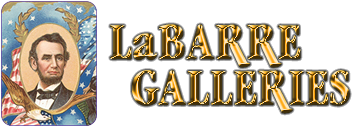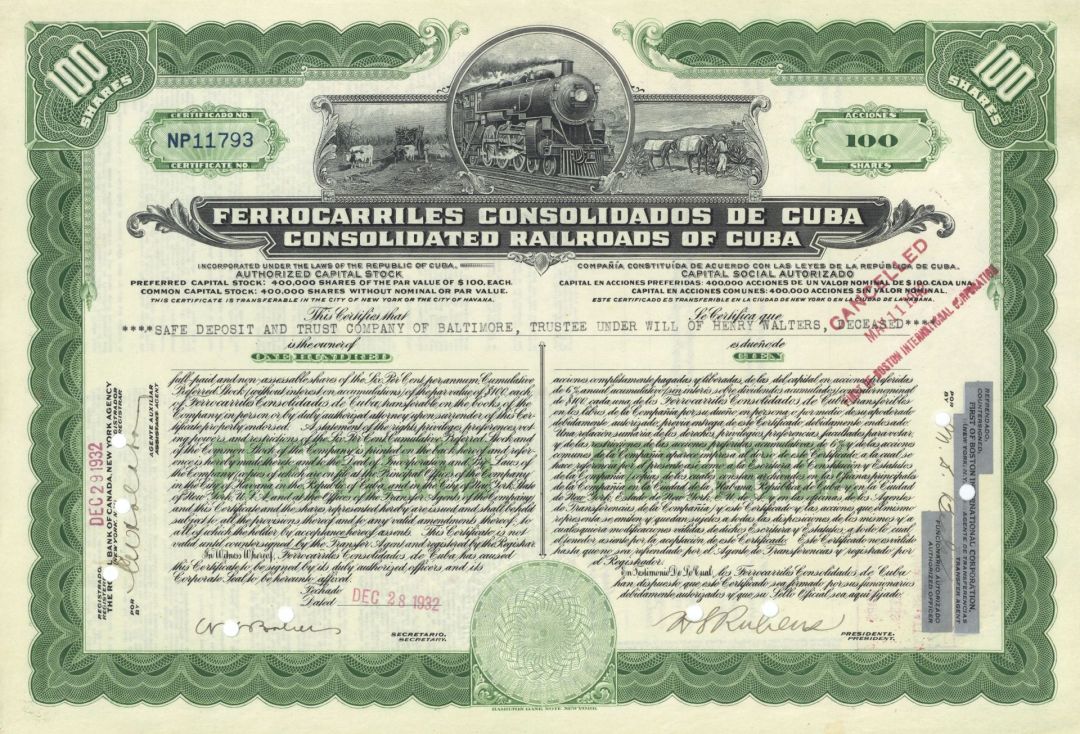1920's-early 40's dated Consolidated Railroads of Cuba - Ferrocarriles Consolidados de Cuba - Stock Certificate
Inv# FS1024 StockSuperb train vignette in circle and 2 plantation scenes in the background. Double text in English and Spanish. A classic!!! Scarce!!! Available in Green or Brown. Please specify color.
The Budd Rail Diesel Car (RDC), commonly referred to as the Budd car or Buddliner, is a self-propelled diesel multiple unit (DMU) railcar. From 1949 to 1962, the Budd Company, based in Philadelphia, Pennsylvania, manufactured a total of 398 RDCs. During the 1950s, both principal railway companies in Cuba acquired RDCs. In 1950, Consolidated Railways of Cuba
(Ferrocarriles Consolidados de Cuba) placed an order for 11 RDC-1s and 5 RDC-2s, which could operate individually or in combinations of up to three cars. Additionally, the Western Railways of Cuba (Ferrocarriles Occidentales de Cuba) ordered four RDC-1s and six RDC-3s between 1956 and 1957. Following the Cuban Revolution, these railcars continued to be utilized by Ferrocarriles de Cuba and remained in service until the 1980s. As of 2017, at least one Cuban RDC-1 was still in existence, albeit stripped of all mechanical parts and repurposed as a passenger coach.
Ferrocarriles de Cuba (FCC), also known as Ferrocarriles Nacionales de Cuba (National Railway Company of Cuba), offers both passenger and freight transportation services throughout Cuba. Sir William Cornelius Van Horne, a Canadian railway builder born in the United States, played a significant role in the expansion of Cuba's railway infrastructure in the early 20th century and was an investor in the Cuba Railroad Company, established in 1900. In 1924, Ferrocarriles Consolidados de Cuba was formed as a result of a dispute between it and Ferrocarriles de Cuba. Several other railway companies emerged and merged during the 1920s, including: - Ferrocarriles del Norte de Cuba (1916) - Ferrocarril Espirituano Tunas de Zaza - Ferrocarril Guantánamo y Occidente
Between 1940 and 1959, Cuba's railway infrastructure underwent significant modernization through the procurement of train stock from Budd and Fiat. These trains facilitated medium-speed, self-propelled diesel service with four-car configurations along the primary route connecting Havana and Santiago de Cuba. Additionally, in the aftermath of World War II, an extensive network of diesel intercity buses was established, featuring four or five major operators competing along the east-west corridor between Havana and the eastern provinces. A number of sugar mills transitioned to using diesel-electric locomotives for freight transportation. By 1958, Cuba boasted the highest railway trackage per square mile of any nation.
A stock certificate is issued by businesses, usually companies. A stock is part of the permanent finance of a business. Normally, they are never repaid, and the investor can recover his/her money only by selling to another investor. Most stocks, or also called shares, earn dividends, at the business's discretion, depending on how well it has traded. A stockholder or shareholder is a part-owner of the business that issued the stock certificates.











Ebay ID: labarre_galleries